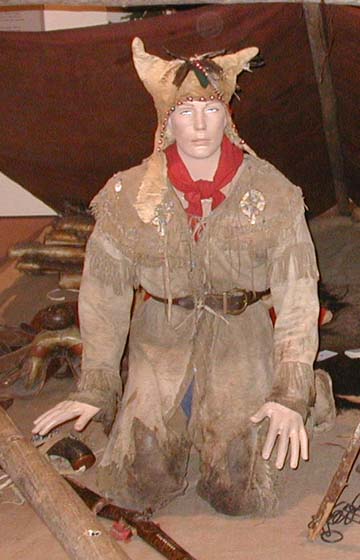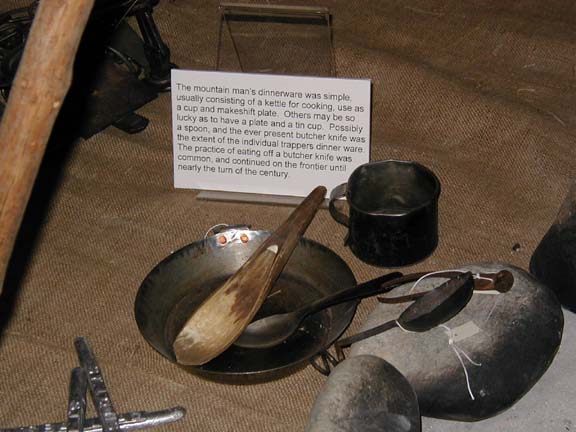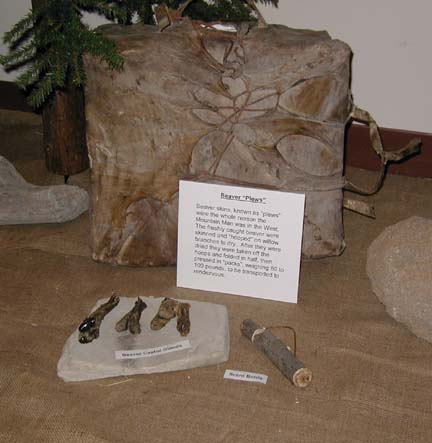
 |
The Trapper's Camp was a simple affair. Shelter was generally a lean-to of blanket, buffalo hide or canvas. Wedge tents were also used for shelter. Tipis were not widely used by trappers because of their bulk and difficulty of moving the poles, although they were used occasionally for winter camps. |
Appearance of a Trapper
"His dress and appearance are equally singular. His skin, from constant exposure, assumes a hue almost as dark as that of the Aborigine, and his features and physical structure attain a rough and hardy cast. His hair, through inattention, becomes long, coarse, and bushy, and loosely dangles upon his shoulders. His head is surmounted by a low crowned wool-hat, or a rude substitute of his own manufacture. His clothes are of buckskin, gaily fringed at the seams with strings of the same material, cut and made in a fashion peculiar to himself and associates. The deer and buffalo furnish him the required covering for his feet, which he fabricates at the impulse of want. His waist is encircled with a belt of leather, holding encased his butcher-knife and pistols-while from his neck is suspended a bullet-pouch securely fastened to the belt in front, and beneath the right arm hangs a powder-horn transversely from his shoulder, behind which, upon the strap attached to it, are affixed his bullet-mould, ball-screw, wiper, awl, &c. With a gun-stick made of some hard wood, and a good rifle placed in his hands, carrying from thirty to thirty-five balls to the pound, the reader will have before him a correct likeness of a genuine mountaineer, when fully equipped." |
 |
 |
Camp Bed"The bed of a mountaineer is an article neither complex in its nature nor difficult in its adjustment. A single buffalo robe folded double and spread upon the ground, with a rock, or knoll, or some like substitute for a pillow, furnishes the sole base-work upon which the sleeper reclines, and, enveloped in an additional blanket or robe, contentedly enjoys his rest." -Rufus Sage, 1841 |
CookingA simple wooden tripod served as a cooking arrangement. The cooking pots were light sheet iron kettles and pots. Sometimes a frying pan was found. Cast iron was heavy to travel with and was not at all common. |
 |
 |
UtensilsThe mountain man's dinnerware was simple, usually consisting of a kettle for cooking. Others may be so lucky as to have a plate, a tin cup, possibly a spoon, and the ever present butcher knife. This was the extent of the individual trappers' dinner-ware. The practice of eating off a butcher knife was common and continued on the frontier until nearly the turn of the century. |
Beaver "Plews"Beaver skins, known as "plews", were the whole reason the Mountain Man was in the West. The freshly caught beaver were skinned and 'hooped' on willow branches to dry. After they were dried, they were taken off the hoops and folded in half. They were then pressed into 'packs' weighing 80 to 100 pounds, to be transported to rendezvous. |
 |